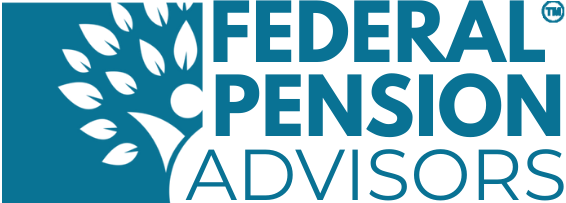You’re not alone; 4,359 federal employees booked their free review.

Can a Charity Be a Beneficiary of a 401(k)? Yes, And It Can Be One of the Smartest Ways to Give
For many people, a 401(k) is one of the largest assets they’ll ever own. So it’s natural to wonder:
“Can I name a charity as the beneficiary of my 401(k)?”
The short answer:
Yes, you can name a charity as the primary or contingent beneficiary of your 401(k).
But the real value lies in understanding why people do it, how the rules work, and what it means for your heirs, taxes, and legacy.
This guide walks you through everything clearly, simply, and with the nuances that most other articles skip.
Can a Charity Be a Beneficiary of a 401(k)? (Direct Answer)
Yes.
A charity whether a national nonprofit, local organization, donor-advised fund, or private foundation can legally be named as the beneficiary of your 401(k).
You do this by completing a beneficiary designation form provided by your plan administrator.
Once filed, the charity receives your 401(k) assets directly after your death, without going through probate.
The only major 401(k)-specific difference compared to IRAs?
401(k)s are governed by ERISA, which may require your spouse’s written consent if you want to leave your account to anyone other than them.
We’ll explain that next.
How It Works When a Charity Inherits Your 401(k)
Here’s what happens behind the scenes:
- You complete a beneficiary designation form.
- After your death, your 401(k) plan confirms the beneficiary.
- The charity receives the assets directly from the plan.
- Because charities don’t owe income tax, they keep 100% of the money.
Unlike individual beneficiaries, who must pay taxes on withdrawals from an inherited 401(k), charities receive the full value.
That tax efficiency is why financial planners often say:
“If you want to support a charity, your 401(k) is one of the best assets to use.”
Why People Leave Their 401(k) to Charity (Benefits That Most Articles Skip)
1. Charities pay no income tax
If your children inherit a Traditional 401(k), every withdrawal is taxable.
If a charity inherits it?
Zero taxes. Zero erosion. 100% impact.
2. You may preserve more wealth for your heirs
Many families split assets strategically:
- 401(k) → Charity
- Roth IRA or cash assets → Family
This often delivers more after-tax value to your loved ones compared to leaving the 401(k) to them.
3. The gift avoids probate
Funds go directly to the charity.
Your will does not control 401(k) beneficiaries.
4. You keep full control while alive
You can still:
- Withdraw from your 401(k)
- Move money
- Change the charity
- Adjust percentages
- Everything stays flexible.
Important Rules and Pitfalls (Where Most People Make Mistakes)
1. Spousal consent is required in many 401(k) plans
Because 401(k)s are governed by ERISA, your spouse is generally considered the default beneficiary.
If you want to leave your 401(k) to:
- A charity
- A friend
- A trust
- Even a child
Your spouse typically must sign a notarized consent form.
Without this, the plan may override your wishes and transfer assets to your spouse by law even if your beneficiary form lists a charity.
Also read - can a charity be a beneficiary of an ira
2. Mixing beneficiaries can create problems
If you name:
- a charity and
- individuals (children, spouse, siblings)
…in the same 401(k), payout rules become complicated.
To avoid issues, many advisors recommend:
Roll your 401(k) into two separate IRAs before death one designated for charity, one for individuals.
It simplifies tax treatment and prevents unintended distribution rules.
3. Use the charity’s exact legal name
Write it as it appears in IRS records.
Example:
Not just “Humane Society” but “The Humane Society of the United States (Tax ID: XXXXXXXX).”
This prevents delays and mistakes after your passing.
4. Roth 401(k) vs Traditional 401(k)
- Traditional 401(k): Great for charity (highest tax benefit).
- Roth 401(k): Usually better left to your family (already tax-free for them).
Real-Life Example: How a 401(k) Gift Changes Outcomes
Linda, age 63, has:
- $620,000 in her 401(k)
- $180,000 in a Roth IRA
- Two adult children
- A lifelong connection to a cancer research nonprofit
If she leaves everything equally to her children:
- Children inherit a tax-heavy Traditional 401(k)
- Charity receives nothing
- Total taxes over the children’s 10-year inherited 401(k) payout could be significant
If she instead names:
- 401(k) → Charity
- Roth IRA → Children
Then:
- The charity receives the entire 401(k) tax-free
- Her children inherit assets with zero income tax
- More net wealth stays in the family + a lasting charitable legacy
Should You Name a Charity as Your 401(k) Beneficiary?
Here’s a simple guide:
This is one of the few estate decisions where smart tax planning benefits everyone.
How to Name a Charity as Your 401(k) Beneficiary (Step-by-Step)
Step 1: Confirm the charity is a qualified nonprofit
You can check IRS tax-exempt status online.
Step 2: Gather the charity’s legal details
Use:
- Legal name
- Address
- Tax ID (EIN)
Step 3: Request your beneficiary designation form
Your HR department or plan administrator provides it.
Step 4: Complete spousal consent if required
This must typically be notarized.
Step 5: Submit the form and keep a copy
Store it with your estate documents.
Step 6: Review every 2–3 years
Update after marriage, divorce, family changes, or changes to your charitable giving.
Advisor’s Insight: When This Strategy Works Best
Over the years, I’ve seen this strategy deliver impressive results when:
- Someone has more retirement savings than they need
- Their heirs are financially stable
- They want meaningful charitable impact
- They want a simple, probate-free legacy plan
- They have a tax-heavy Traditional 401(k)
And especially when they have other assets (Roth, brokerage, property) better suited for their family.

Leaving a charity as your 401(k) beneficiary can be one of the most tax-efficient legacy strategies available but only if the rest of your retirement plan is aligned with your goals. The decision affects how much your family keeps, how your estate flows, and how different account types should be coordinated.
We specialize in guiding federal workers and retirees through complex planning topics like:
- Structuring 401(k), TSP, and IRA beneficiaries
- Coordinating charitable giving with tax efficiency
- Reducing future tax exposure for heirs
- Choosing when to name individuals vs. trusts vs. charities
- Integrating FERS/CSRS pensions, Social Security, and survivor benefits
- Mapping out long-term legacy strategies
Most people only fill out beneficiary forms once but these forms control more wealth than almost any other document you’ll ever sign. Getting them right is essential.
If you want help determining whether naming a charity as your 401(k) beneficiary makes sense for your situation or how to coordinate it with Roth accounts, TSP withdrawals, or your federal pension we’re here to walk you through it.
Ready to build a legacy plan that supports your loved ones and the causes you care about?
Book your free consultation with Federal Pension Advisors today.
Conclusion: One Form Can Create a Long-Lasting Legacy
Yes a charity can be a beneficiary of your 401(k), and for many people, it’s one of the smartest estate-planning moves they’ll ever make.
It allows you to:
- Support causes you care about
- Reduce tax waste
- Increase what your family keeps
- Simplify your legacy
- A single beneficiary form can turn years of savings into real, meaningful impact.
Disclaimer
This article is provided for educational and informational purposes only and should not be considered financial, legal, or tax advice. Rules surrounding 401(k) plans, charitable beneficiaries, ERISA spousal rights, and estate planning can vary based on individual circumstances and plan provisions. Readers should consult with a qualified financial planner, tax professional, or estate-planning attorney before making decisions about beneficiary designations, charitable giving, or retirement account planning.
Content References
1. IRS – Required Minimum Distributions & Inherited Accounts
2. IRS – Charitable Organizations & Tax-Exempt Status
3. IRS – Beneficiary Designations & Retirement Plans
4. DOL (Department of Labor) – ERISA Spousal Rights
5. SECURE Act & SECURE Act 2.0 Provisions
6. Fidelity, Vanguard, Schwab & T. Rowe Price Beneficiary Literature


Get Updated
Subscribe to our weekly updates for the latest on retirement planning, federal benefits, exclusive webinars, and more!
Download Federal Retirement: Step-by-step Checklist
This comprehensive guide will help you understand your federal benefits, optimize your savings, and plan for a comfortable future.



.png)







